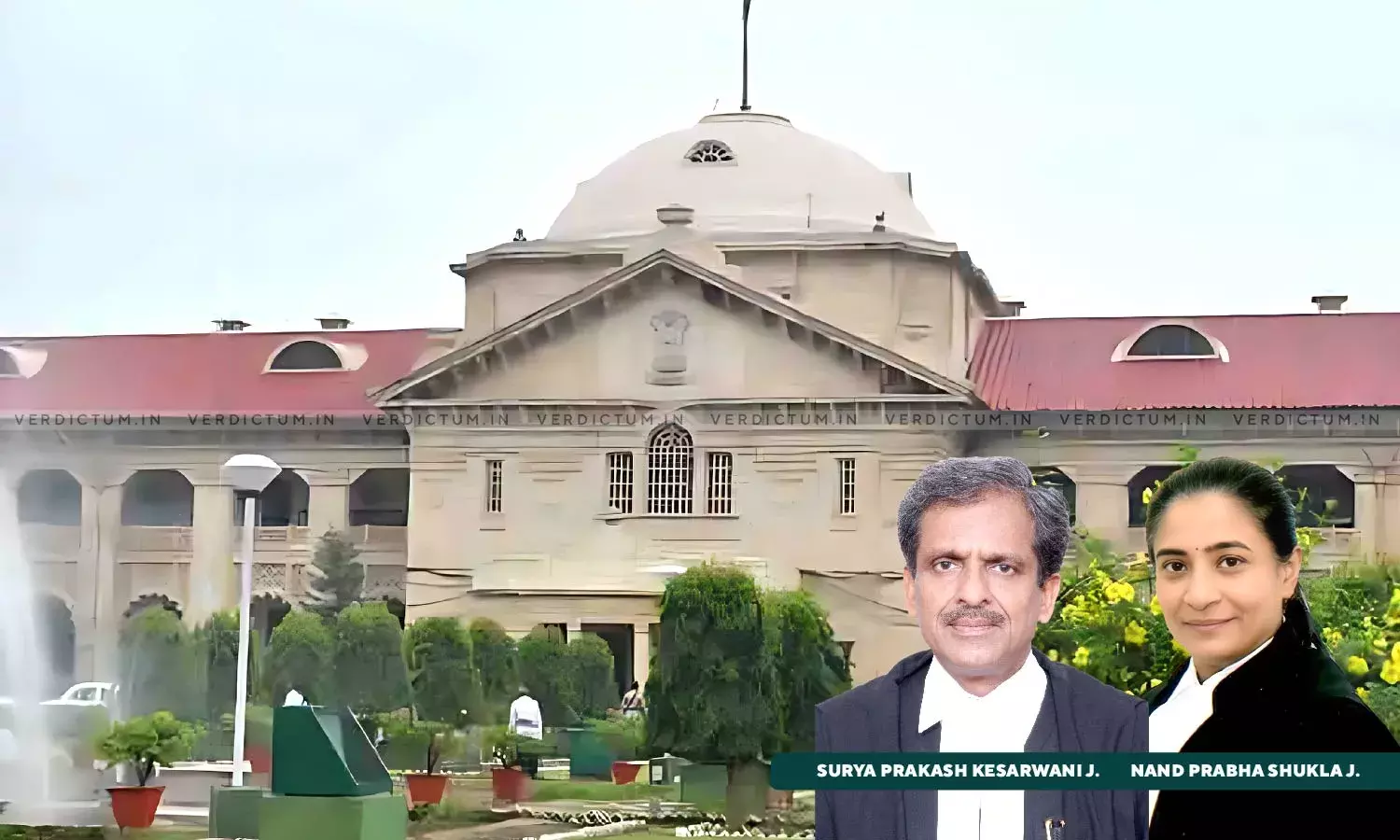Trial Court's Decision Was Reasonable: Allahabad HC Upholds Acquittal Of Accused In 1983 Murder Case

The Allahabad High Court upheld the acquittal of 3 murder accused in a 1983 case remarking that the conclusion so reached by the trial court was based on evidence on record and reasonable which does not require any interference.
The Division Bench of Justice Surya Prakash Kesarwani and Justice Nand Prabha Shukla observed that:
“the view taken by the learned Trial Court who disbelieved the presence of PW-1 at the place of occurrence, non-explanation of injuries of the deceased by the prosecution, evidence of PW-3, and the injuries of PW-1, PW-2 and Surinder Kaur, do not inspire confidence, to hold that the prosecution has failed to establish his case 8 beyond doubt, is not perverse.”
The case was registered under Section 302/324 of the Indian Penal Code (IPC). The First Information Report (FIR) was lodged by Avtar Singh, the son of the deceased Kundan Singh, who was an eyewitness to the incident.
According to the FIR, a dispute arose between Kundan Singh and the accused Hardayal Singh over the return of buffaloes purchased by Kundan Singh. This led to a scuffle about three or four months before the incident. On the date of the incident, February 11, 1983, while Kundan Singh and Avtar Singh were cutting barseem in their agricultural field, the accused, along with his brothers and a relative, arrived at the scene with weapons and attacked Kundan Singh, Avtar Singh's uncle Dileep Singh, Avtar Singh's son Sardar Singh, and Avtar Singh's mother and fled the scene.
During the trial, the prosecution presented eyewitness accounts, medical reports of the injured, post-mortem report of the deceased, and other relevant evidence. However, the learned Session Judge had acquitted all the accused due to minor contradictions in the statements of witnesses and the FIR.
Advocate K.P. Pathak (A.G.A.) appeared for the Appellant and Advocate P.N. Mishra appeared for the Respondents.
The State filed an appeal against the acquittal, arguing that the prosecution had proved the motive, place of occurrence, common intention, and injuries sustained by the victims, and that the minor contradictions should not be considered fatal for the prosecution's case.
On the other hand, the defense argued that the injuries do not align with the injury report and evidence, and the prosecution failed to establish the motive. They claimed that the presence of the eyewitnesses was doubtful and challenged the credibility of their testimony.The defense also contended that there was no recovery of the weapon (sooja) allegedly used in the attack, and the descriptions of the weapon varied in different stages of the case. They suggested that the FIR was lodged as a false implication after consultation among the alleged injured witnesses.
The Court found that the Session Judge acquitted the accused in the case due to several reasons, including contradictions between medical evidence and eyewitness testimonies, doubts about the presence of the eyewitnesses at the scene, and the prosecution's failure to explain certain injuries sustained by the deceased. The injuries on the deceased could not be conclusively linked to the weapon described by the prosecution, and the medical evidence presented by the prosecution was questionable.
It was further noted that the eyewitnesses had made statements that were inconsistent with each other and with the physical evidence found at the scene. The presence of PW-1 at the place of occurrence was doubted, and he failed to disclose certain details in his testimony, raising doubts about his credibility.
The Court considered the medical examination conducted by PW-3 on the injured unreliable, as the injuries could have been self-inflicted and not necessarily linked to the incident in question.
“Non-explanation of these injuries leads to two possible conclusions. The first is that for causing the lacerated wound, the bar of kanta was used as a blunt object and the contusion and abrasion were caused by falling down. The second conclusion may be that these injuries were caused by some blunt object not seen by the complainant Avtar Singh PW-1 and Dileep Singh PW-2. From both the conclusions, one conclusion can very well be drawn that either PW-1 Avtar Singh and PW-2 Dileep Singh were not present at the place of occurrence or they concealed some material facts during trial. Both the circumstances are fatal to the prosecution case. The burden to explain occurrence and the injuries, was on the prosecution but the prosecution has failed to discharge its burden.”
The Court applied the principles laid down by Supreme Court in the case of Chandrappa v. State of Karnataka, (2007) 4 SCC 415 and Dhanapal and others v. State, (2009) 10 SCC 401 regarding powers of the appellate court while dealing with the appeal against an order of acquittal.
The High Court found that the view taken by the trial court, which resulted in acquittal, was reasonable and not perverse. Therefore, the High Court upheld the trial court's decision and dismissed the government's appeal.
Cause Title: State of U.P. v. Har Dayal Singh & Ors.
Click here to read/download Order


